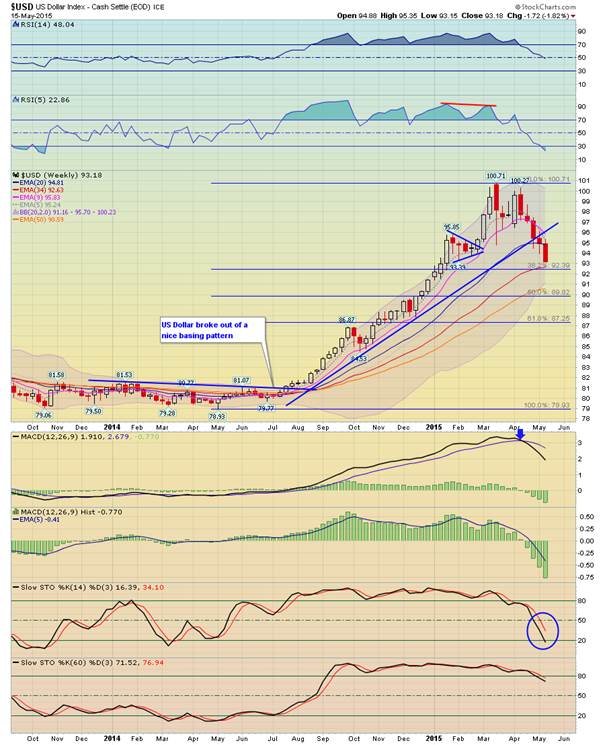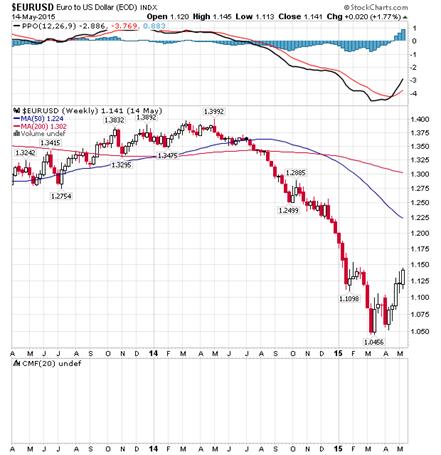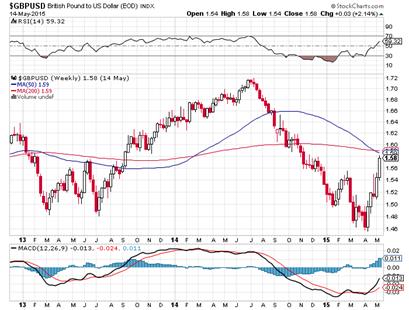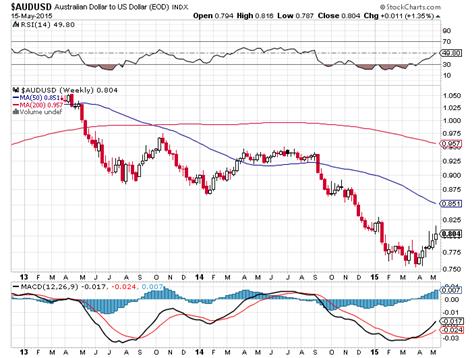The chart above shows the US$ index, which is a measure of the value of the U.S. dollar relative to majority of its most significant trading partners.
As you can see from the chart the US$ is correcting downwards but this is a normal correction based on the fact the US has been posting some poor economic numbers but the chart is indicating the US$ index may fall to around 90 then turn back up as the US growth numbers, even poor, look better than the rest of the world.
Dollar/Yen
Recently we have seen 122 as a high (March 2015) and we have seen 118 (April 2015) as the low. The pair have been stuck in trading range. This reminds me of Jan 2014 to August 2014 when the pair was stuck in a range of 105 to 100. The BOJ continues to do QQE: the Bank will purchase JGBs so that their amount outstanding will increase at an annual pace of about 50 trillion yen and the BOJ will increase the monetary base at an annual pace of about 60-70 trillion yen. In Addition the Bank will purchase ETFs and Japan real estate investment trusts (J-REITs) so that their amounts outstanding will increase at an annual pace of 1 trillion yen and 30 billion yen respectively. So again we believe the Yen is stair stepping itself higher .. once 125 vs 1$ goes there is little resistance until 147. One should not hold Yen, unless there is a material change in BOJ policy. (Remember a ‘rising’ Yen is a weakening Yen.)
EUR/Dollar
The fall of the Euro over the last several years from 160 in 2008 to a low of 104 in 2015 — it is only natural to see a bounce but the question is how high can that bounce be 115 or 120? We doubt anything more than 120 if it can get there — Greece is still a huge issue which leads to Portugal, Spain, Italy and the rest of Europe. These issue have not been resolved and judging by the progress in Greece things can likely only get worse.
GBP
The Election in the UK produced a small Conservative majority win – this has given the Pound wind in its sails for now. The question is can Sterling keep these gains longer term.
AUD
Australia can still cut interest rates. Many believe this will happen especially in the face of falling commodity prices. However the last rate cut was highly anticipated and factored in as the AUS$ rose after the cut. Australia can take on more debt as the government has low debt levels compared to its peers. The other wild card for the Aussie is China as any stimulus China does has a direct effect on the Aussie economy of just about 24 million people — about the same as the Shanghai municipality.






